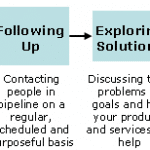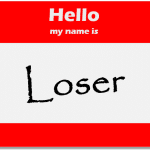Health fair marketing always strikes me as the “tastes great, less filling” marketing strategy. Like lite beer, it sounds great—but the reality so often falls short of expectations.
These do’s and don’ts shed new light on what works, what doesn’t, and how your wellness center, health club or yoga studio can avoid common traps and pitfalls:
1) Health fair marketing vs sales
The purpose of health fair marketing is to make connections and increase awareness, NOT to make immediate sales.
Think about it for a minute: what are the odds that you’ll meet lots of strangers who are primed and ready to enroll in your weight loss program, even though they’ve never heard of you before?
Low, low, low.
So you’re doomed to disappointment if you’re expecting to close lots of new business.
The usual measure of success we recommend is the number of new contacts you leave with — people who showed a threshold level of interest in your business by signing up for your healthy lifestyles newsletter or a free white paper on corporate wellness, entering a drawing for a health coaching or personal training package, etc.
2) Made you look!
Most health fair booths, tables and displays are just tables covered with a few stacks of ill-chosen, badly presented and poorly written information, and a couple of people lounging behind the booth in folding chairs, talking to each other. Look around at the next fair you go to and tell me I’m wrong.
Gosh, no wonder health fair marketing’s a dud for so many health and wellness businesses.
Decorate your booth and think like a host or hostess.
Picture your 5×10 area as the world’s most compact party and you’re on the right track:
- Posters with client and patient pictures from your wellness center or clinic
- Balloons (an oldie but a goodie)
- Music!
- Fun (but relevant, please!) costumes to attract attention
- A fishbowl drawing (decorated, of course) to collect business card or entry forms that get folks to slow down and look
- STAND UP—don’t hide behind the table (I once saw an exhibitor in front of his booth juggling water bottles…and it worked!)
- Greet people warmly and make eye contact
3) Incentives are great, but…
Health fair marketing incentives that encourage people to visit your health fair booth and that encourage them to hand over their contact info are fine.
But a word of caution: the best incentives are those related directly to your chiropractic clinic or nutrition business.
Don’t make the mistake of offering an extravagant and unrelated incentive such as iPad or iPhone. Lots of passers-by will give you their contact info so they can get the goodies, but almost none of them will actually have any interest in your services. If you do, you’ll be patting yourself on the back—”Wow, 482 new email addresses!”—only to wonder why you never hear from these folks again.
Instead, you might offer a drawing for a free year-long weight loss program offered by your firm. If people aren’t drawn in by that…well, they weren’t your ideal customer anyway, were they?
4) Logo merchandise: stop the madness!
Do not waste your money on trinkets and trash—cheap logoed merchandise often unrelated or only vaguely related to your business.
Water bottles with your health club name, a fridge magnet shaped like a barbell with your personal training studio’s phone number, pens and sticky pads with your health coaching practice’s logo—trust me, the fact that someone uses your pen when they write “milk” on the shopping list your magnet holds on their fridge will NOT increase the likelihood that they will be back to buy something from your business.
If you want to use this kind of giveaway, make it USEFUL and directly related to your business focus.
For example, a nutrition business might give away a fridge magnet that lists the vegetables that should always be purchased as organic, due to pesticide contamination. Or you might give away a small notepad with a preprinted daily “healthy habits” checklist. That disposable water bottle? It’s likely to be…wait for it…disposed of, and relatively soon.
5) Calls to action (CTAs)
Your main goal at a health fair is simply to get contact information from people who have at least a threshold level of interest in your services, so that YOU can take the initiative and communicate with them in the future, rather than hoping they remember you…which they almost certainly won’t.
We usually like to see a call to action like a newsletter signup, or a sign-up to receive a white paper, or a sign-up to receive an invitation for a free seminar or briefing, because CTAs like that actually get folks talking to you.
6) Beyond the business card
You need something tangible that instantly sparks the curiosity of anyone who stops by your booth or table.
Your business card isn’t enough. Neither is a disposable water bottle or magnet with your logo!
Instead, create something interactive that will encourage your health fair contact to stop and engage with your business concept for a minute or two.
Particularly effective examples include a five-question quiz, a brief and focused self-assessment, or a relevant pencil-and-paper puzzle or game (for example, trivia questions that explode common myths about your particular health or wellness area).
Think about putting a “see how you did” and quiz answers on your website before you head out to the fair, and make sure you can’t get to the answers without providing an email.
Quizzes, quick self-assessments, and the like should be brief, entertaining, and provoke at least a minimum of engagement. Your marketing materials, which we discuss next, will carry on from there.
7) Marketing stuff people will actually look at
Health fair visitors will actually scan and even read:
- Case studies of real people your business has helped: e.g., “How Carol Avoided Knee Surgery Through Yoga.” These will help seriously interested browsers identify with your customers, and potentially, become one.
- Tip sheets with ideas provided by your clients and customers: “Five Things No One Told Me When I Was Diagnosed With Diabetes.” Sometimes people will trust a complete stranger with a common need before they’ll trust the business who meets that need. So give them what they’re looking for!
- Competitive comparisons: For example, Weight Watchers vs Curves vs bariatric surgery vs your weight loss program. These tools help prospects understand how your business is different.
- Buying guides: “How to choose a health club or personal trainer” builds trust and can come across much more objectively than an outright ad.
- More Quizzes: People like feeling smart. A quiz called “Are You Smarter Than A Fifth-Grader About Osteoporosis?” challenges them to discover something new and begin to rely on you as a trusted source of knowledge.
- Detailed guides and self-assessments: Both “Myths & Misconceptions About Nutrition & Sports Performance” and “Am I Ready To Train For A 5K?” help interested people see a world of possibilities beyond just today’s health fair.
All of these materials demonstrate your expertise, and they’re all designed to address different phases of the buying cycle, build trust, and remove sales obstacles.
Now just don’t spoil it all by flopping down messy stacks of handouts on your table. Use vertical displays that are easy for passersby to scan. If you want your info to be seen as valuable, treat it that way!
8) What happens next
Your health fair marketing plan should have before and after stages. Step 1 is knowing BEFORE the health fair what you intend to do AFTER the health fair.
- Follow up with your new contacts within 3 business days. You don’t necessarily need to contact each one individually, but DO follow up in a way that makes sense for your yoga studio, wellness center, health club or clinic.
- And remember, pix or it didn’t happen! Don’t forget to post about your company’s participation in the fair, along with images and videos that make people wish they’d been there and want to follow up (see now why we wanted it to feel like a party?).
- Keep the party going. Right after the fair is a great time to offer a free class or other complimentary experience (more on this below).
- If someone signed up for an email newsletter at the fair, go ahead and send the current version, AND send each attendee an individual email that thanks them for stopping by the booth. Put a postcard in the mail. And keep the conversation going.
Marketing is additive (not addictive, that’s different), so you need several touchpoints to make a lasting impression.
9) Follow-up events
Email and direct mail are one-way communications. You want to get past those as quickly as possible so that you’re actually in two-way communication with people who are likeliest to become customers.
An live in-person or webinar-style event is an excellent follow-up activity that sorts out folks who are relatively readier to buy from those who were just idly checking things out for future reference. For example:
- A corporate wellness provider might offer a webinar called “Employee Wellness: Separating Hype From Reality.”
- A dietetics practice might offer a short weekend seminar on “Junk-Food-Proofing Your Kids In Five Easy Steps.”
Set the date and topic ahead of time. That way you can say to booth visitors, “Let me get your email address so I can invite you to Event X and send you all the details.”




